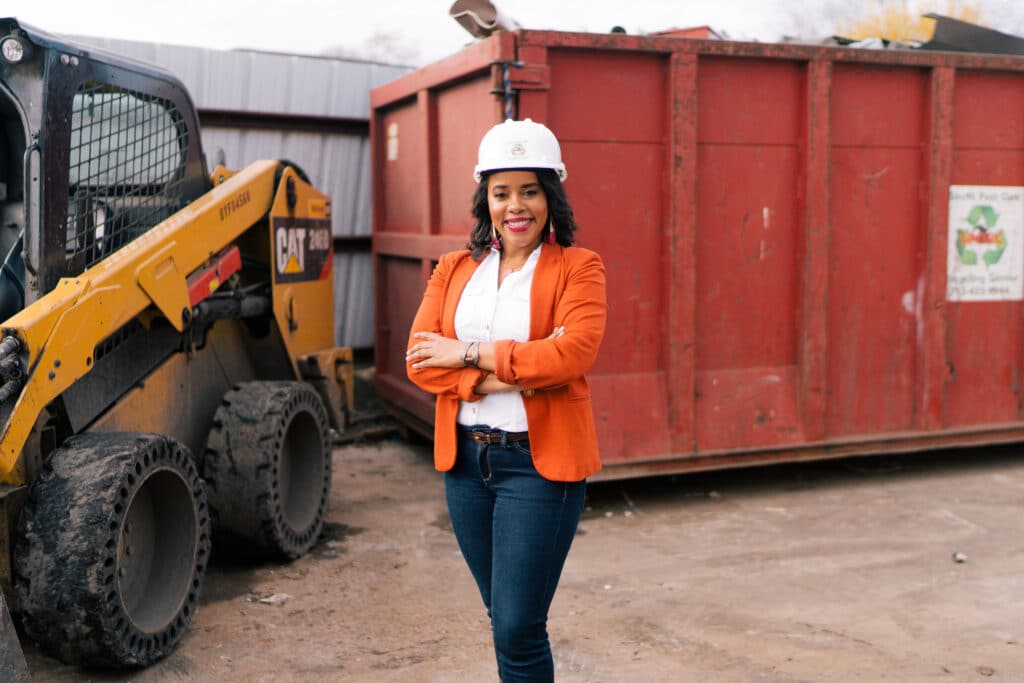The Only Woman in the Room

Over their careers, many women find themselves the only woman at a conference table of men. To move past this reality, we’ll need to build bridges between successful women and their male advocates in the workplace.
A recent Women in the Workplace study from McKinsey described how many organizations identify and promote only one woman—referred to as the “Only”—to an executive leadership role and then believe their diversity and inclusion work is complete. One in five women report being an Only at work. This is twice as common for senior-level women and women in technical roles, among whom approximately 40 percent are Onlys.
According to McKinsey, Onlys have a significantly worse experience than women who work with other women. More than 80 percent are on the receiving end of microaggressions, compared to 64 percent of women as a whole. They are more likely to have their abilities challenged, to be subjected to unprofessional and demeaning remarks, and to feel like they cannot talk about their personal lives at work. Most notably, Onlys are almost twice as likely to have been sexually harassed at some point in their careers.
Onlys stand out in a crowd of men, and the heightened visibility can make them targets for bias. While they are each just one person, they often become a stand-in for all women; their individual successes or failures become a litmus test for what all women are capable of doing. With everyone’s eyes on them, Onlys can be heavily scrutinized and held to higher standards. As a result, they most often feel pressure to perform, are put on guard and are left out.
Being an Only also impacts the way women view their workplace. Compared to other women, Onlys often believe that the best opportunities rarely go to the most deserving employees, promotions are not fair and objective, and ideas are judged by who raised them rather than by their quality. Given the negative experiences and feelings associated with being an Only, Onlys are one and a half times more likely to think about leaving their job.

An Only faces a unique set of circumstances that lead to odd, frustrating work challenges. Marie is a VP of an international construction firm. Throughout the course of her career, she has had too many experiences as an Only to count. Gender bias and misunderstanding come with the territory. For example, after attending an executive retreat with a small group of men, a 63-year-old white male approached her and asked her to get his luggage from the concierge and put it in his car. Confused, she politely responded, “You must have me confused with someone else. I work with you on the executive team.”
He responded, “Whatever! If you can’t do it, find that girl who should.” Even after two days of working side by side, the executive still could not distinguish one woman from another.
A Few Good Men
I have been an Only for far too many years to count. I have more degrees and designations than anyone in the organization, and I have worked extremely hard to get the coveted Only seat at the table. And yet the reality is that none of it would have mattered if it were not for the good men who cracked open the door and gave me a chance. They all had similar qualities. They respected me, treated me as an equal, defended me, and supported me when it was obvious that I was not being supported because of my gender; they gave me a chance to grow and learn within their organizations.
When I was twenty-one years old, I had two degrees from college, and my work experience consisted of sandwich maker, typist, receptionist, and waitress. I applied for a job as a claims adjuster. I wore my grandmother’s suit to the interview because I didn’t own one. My first boss was the director of an employers’ insurance office in Texas. Because this sort of question was still acceptable in the 1980s, he said, “You are too young. Why should I hire you?”
I responded, “I just need someone to give me a chance. I should not be penalized because I have two degrees at twenty-one years old. It should show you my work ethic.” My interviewer replied, “Anyone with that attitude deserves a chance to become a claims adjuster.”
And he offered me my first job. I made $17,500 a year, and I was given a company car. I had hit the jackpot. I had made it. To this day, I rely on this boss’s example of leadership style in leading my own teams. He set high expectations, was always available for questions and support, and passed on his knowledge. He never micromanaged or concerned himself with time clocks and hours. He had a philosophy to never mess with people’s time or money. His team was expected to manage their own time. Pay raises were never promised; they were earned. When someone on the team was not meeting his expectations, he dealt with it head-on. His team was high performing and happy.
There are many men who have helped me advance my career throughout my journey, and I am sure there will be more in the future. My goal now is to encourage both men and women to pave the way for the new generation by building bridges. The idea of scarcity—of the zero-sum game, of there not being enough room for everyone—is obsolete and broken. Both men and women need to champion the future and abolish the outdated notion of traditional roles in the workplace. People should work where they are best suited and have the skills, work ethic, empathy, and talent to perform. One day, gender will have nothing to do with success, and a lot fewer women will have the experience of being an Only.
Building Bridges in the Workplace
Here are a few concrete steps any CEO or executive can take in their organization to help build bridges between men and women, creating a fairer and more functional environment for everyone.
Identify the Onlys
Take a good look around your organization and identify the Onlys. If you have promoted one woman and thought your work was complete, think again. Check-in with the Only and get her perspective on what is holding back true and lasting change within your organization.
Recruit Male Advocates
Most women know “ready now” men who have expressed interest in women’s equity topics. Perhaps they are the father of a daughter, had a working mother, or have a working spouse. They are interested in being supportive but just need some direction or ideas on how to parlay their interest into being an ally or acting as an advocate. Women must take the initiative. Invite male colleagues to coffee; set up a call or a meeting, and candidly share your experiences as a woman in the industry or in the organization. Then invite them to attend a women’s leadership meeting or program. If your organization does not have one, discuss the option of leading such a group. Point prospective male advocates in the direction of online tools such as:
- The Male Advocacy Profile, a quiz to assess where a man is on the advocacy spectrum and provide tips for championing the cause.
- The Father of a Daughter Initiative, a roadmap to help men make the connection between women at work and their daughters and to take action to bring about change for the women in their lives. Some actions include encouraging qualified women to apply for positions when they become available, mentoring or sponsoring a female coworker, having a candid conversation with a female coworker about her experiences working in the company, and becoming aware of and correcting microbias in the workplace.
Women: Do a Self-Check.
Can you honestly say that you champion other women in the workplace? How do you know for sure? Where are you on the advocacy continuum, and what else could you do to create a more inclusive and diverse workplace? In order to really check where you are in support of other women, take the time to participate in the Gender Advocacy Profile quiz. These twenty questions will help you determine how committed you are to embracing gender equality in workplace dynamics.
Men: Put in the Work
Men should start with the Male Advocacy Profile to recognize any unconscious barriers they may have to truly supporting women in the workplace. Today’s reality is that some men see the #MeToo movement as male bashing and view women as radical and disruptive. Recognizing barriers and tendencies toward disengagement is key to change.
• • •
Organizational leaders must recognize that change starts at the top. CEOs set, demonstrate, communicate and enforce the core values of the organization. Make sure that Diversity and Inclusion initiatives are not just on paper but they are incorporated into the fabric of the organization.
Embarking on change and breaking down silos is not for the faint of heart. It requires courage to go against the status quo and speak your truth in a world that may not be ready for it. Building bridges where none exist changes the world. The world will only change for the better when people step up and work together toward change.
This article is adapted from Tricia Kagerer’s The B Words: 13 Words Every Woman Must Navigate for Success, available now. Watch Tricia speak with Dallas’ WFAA for Women in Construction Week here.






Mindful Messaging
May 2, 2023